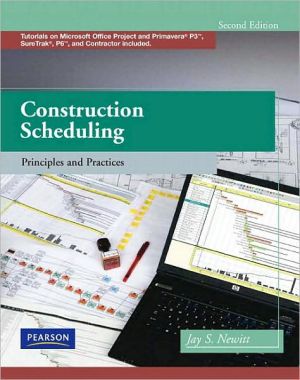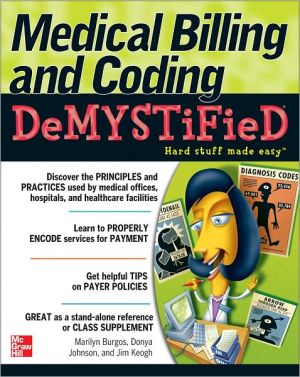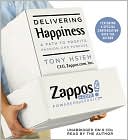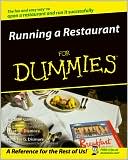Construction Scheduling: Principles and Practices
This text is a comprehensive, stand alone reference for project management scheduling. It features a unique combination of principles/fundamentals of scheduling and project management along with practical applications and tutorials of the 4 most common scheduling software programs–Microsoft Project, Primavera Project Planner (P3), SureTrak, P6 Project Manager and Contractor. Having scheduling information and software instructions in one book obviates the need for two texts, and the exercises...
Search in google:
This text is a comprehensive, stand alone reference for project management scheduling. It features a unique combination of principles/fundamentals of scheduling and project management along with practical applications and tutorials of the 4 most common scheduling software programs–Microsoft Project, Primavera Project Planner (P3), SureTrak, P6 Project Manager and Contractor. Having scheduling information and software instructions in one book obviates the need for two texts, and the exercises and examples in the scheduling portion are tied to the same exercises in the software portions.
Anyone involved in the management of projects will find this text useful; however, it is written specifically for managers in the construction industry and students preparing for management positions. Therefore, the examples are construction related. However, this text would be extremely helpful to anyone in a project management position in manufacturing, engineering, computer and software design, technology, military or business management.\ The text contains comprehensive and practical information on the subject of scheduling, everything from checklists to the practical uses of CPM, including instructions on the four most popular project management software programs (Primavera Project Planner, SureTrak, Pie/c, and Microsoft Project). The text focuses on the basics of using the Critical Path Method (CPM) to plan and schedule projects and explains the use of CPM the way project managers use it. It is based on practical experience rather than research and theory. The emphasis is on managing a project rather than focusing on the details of CPM, getting lost in those details, and forgetting that the purpose of the schedule is to help manage and control a project.\ The techniques discussed have been used by project managers in a variety of projects, from throughout the nation and from students the author has taught for over 2 S years in a four-year construction management curriculum at a major university: The author has consulted with and provided inhouse training to over 150 construction companies and trained literally thousands of managers on these principles and techniques.\ The last four chapters in the book contain practical instructions on how to use Primavera ProjectPlanner (P3), P3 a/c, SureTrak, and Microsoft Project. The software instructions are project driven, rather than software driven. The instructions are based on how managers use the software, rather than explaining every detail on every screen, in the order the screens appear. These chapters contain examples and assignments that teach how to use the software to communicate and manage the project.\ There is a CD included with the text that has example schedules for each of the software packages discussed. The CD also contains an automated checklist created with Microsoft Excel that some managers may find useful. In addition, the CD also contains an example bar chart created with Microsoft Excel.\ It is the author's sincere hope that the ideas and information contained in this book will be able to help project managers gain better control of their projects and thus their life. It is the author's desire that through the application of these ideas and techniques the manager will have more time to spend with family and loved ones rather than living at the project site. As managers of major projects we must learn and apply methods to improve the management of our projects without spending excessive hours each week doing so. It is time we learn to manage and control the project rather than allowing it to manage and control us. This book contains ideas to help us to work smarter so that we can play harder.\ Appreciation is expressed to my wife Sylvia and our six children: Jayson, Alisa, Jennifer (who edited the entire original manuscript), Chris, Jalyn, and Jarica for their support and patience during the writing of the text.\ Particular thanks are due to Dr. Neil Eldin, Texas A & M University, Charles R. Glagola, University of Florida, and James Stein, Eastern Michigan University, for their assistance with the text review.\ As you read this text book and have any comments or suggestions, the author would be pleased to hear from you. For professors using the text, the sharing of a course syllabus would also be appreciated.\ Jay S. Newitt
Ch. 1 Overview of Project Management Basics 1Ch. 2 Why Schedule 6Ch. 3 Checklists, Daily To-Do Lists, and Magnetic Scheduling Boards 17Ch. 4 Bar Chart Schedules 27Ch. 5 Introduction to CPM Scheduling 38Ch. 6 Creating the Network Logic Diagram 46Ch. 7 Determining Durations 57Ch. 8 Calculating Start and Finish Dates 63Ch. 9 Calculating Total, Shared, Free, Independent, and Negative Float 77Ch. 10 Using Lags in Network Logic Diagrams 91Ch. 11 Reviewing and Analyzing the Schedule 100Ch. 12 Creating Bar Charts and Tabular Reports from Network Logic Diagrams 108Ch. 13 Linear or Line-of-Balance Schedules 125Ch. 14 Updating the Schedule 135Ch. 15 Using the Schedule to Forecast and Balance Resources 144Ch. 16 Cost Schedule Control System Criteria (C/SCSC) 157Ch. 17 Creating Teamwork and Getting Subcontractors to Conform to the Schedule 163Ch. 18 Other Scheduling Techniques 171Ch. 19 Introduction to Computerized CPM Scheduling 182Ch. 20 Managing Projects Using Primavera Project Planner (P3) 188Ch. 21 Managing Projects Using SureTrak 231Ch. 22 Managing Projects Using Microsoft Project 272Ch. 23 Managing Projects Using P6 Project Manager or Contractor 304Index 353








